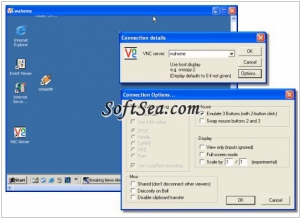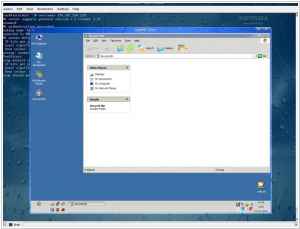RealVNC vs TightVNC
June 19, 2023 | Author: Michael Stromann
7

RealVNC is a UK company founded in 2002 by a team from the world-leading AT&T Laboratories in Cambridge. The company was established to commercially develop, enhance and promote VNC, the innovative remote access software with a widespread international user base. VNC (Virtual Network Computing) software is cross-platform, allowing remote control between different types of computer. For ultimate simplicity, there is even a Java viewer, so that any desktop can be controlled remotely from within a browser without having to install software. VNC is free and is redistributable.
RealVNC and TightVNC are two different software applications used for remote desktop access and control. While they share similarities, the main difference between RealVNC and TightVNC lies in their underlying technology and licensing.
Technology: RealVNC and TightVNC are based on different protocols. RealVNC uses the Virtual Network Computing (VNC) protocol, which is an open standard for remote desktop access. TightVNC, on the other hand, is a variant of VNC that uses a more efficient compression algorithm called Tight encoding. This makes TightVNC generally faster in terms of performance compared to RealVNC, especially over slower network connections.
Licensing: RealVNC offers both free and paid versions of their software. The free version, known as RealVNC Personal Edition, is available for personal and non-commercial use only, and it has some limitations in terms of features. RealVNC also offers paid versions, such as RealVNC Enterprise and RealVNC Home, which provide additional features and are licensed for commercial use.
TightVNC, on the other hand, is released under the GNU General Public License (GPL), which means it is open source and freely available for both personal and commercial use. This makes TightVNC a popular choice for users who prefer open source software and need a free solution for remote desktop access.
In summary, the main difference between RealVNC and TightVNC lies in their underlying technology and licensing. RealVNC offers both free and paid versions with proprietary technology, while TightVNC is open source and freely available, with a focus on efficient performance. Users may choose between the two based on their specific needs, preferences, and licensing requirements.
See also: Top 10 Remote Support software
Technology: RealVNC and TightVNC are based on different protocols. RealVNC uses the Virtual Network Computing (VNC) protocol, which is an open standard for remote desktop access. TightVNC, on the other hand, is a variant of VNC that uses a more efficient compression algorithm called Tight encoding. This makes TightVNC generally faster in terms of performance compared to RealVNC, especially over slower network connections.
Licensing: RealVNC offers both free and paid versions of their software. The free version, known as RealVNC Personal Edition, is available for personal and non-commercial use only, and it has some limitations in terms of features. RealVNC also offers paid versions, such as RealVNC Enterprise and RealVNC Home, which provide additional features and are licensed for commercial use.
TightVNC, on the other hand, is released under the GNU General Public License (GPL), which means it is open source and freely available for both personal and commercial use. This makes TightVNC a popular choice for users who prefer open source software and need a free solution for remote desktop access.
In summary, the main difference between RealVNC and TightVNC lies in their underlying technology and licensing. RealVNC offers both free and paid versions with proprietary technology, while TightVNC is open source and freely available, with a focus on efficient performance. Users may choose between the two based on their specific needs, preferences, and licensing requirements.
See also: Top 10 Remote Support software



